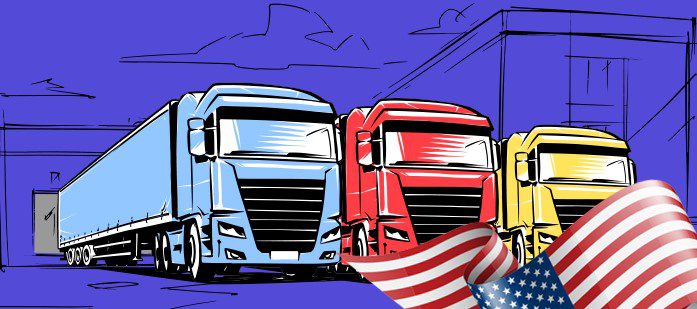The shortage of truck drivers in the United States is a critical issue that has been steadily worsening over the past few years. With the trucking industry serving as the backbone of the American economy, the implications of this shortage are far-reaching.
In this article, we will explore the factors contributing to the truck driver shortage, its impact on various sectors, and potential solutions.
A Detailed Look at the American Truck Driver shortage

American truck driver shortage statistics are alarming, to say the least. Over 80,000 drivers are needed currently, and the country cannot wait for these individuals.
Another appalling part is that this issue has no solution coming soon. Estimates suggest that in the year 2030, there will be about 160,000 fewer truck drivers than predicted.
The numbers show how important an issue they are. Trucking comprises the spine of the American economy as it carries more than 70 percent of American freight. The deficit of truck drivers is already affecting many segments.
This results in higher bills, late shipments, and destructions in such vital areas as trade, food, and health care. The projection that there will be a deficit of 160,000 drivers by 2030. Of this long haul drivers that commonly use semi trucks with sleeper cabs are in even shorter supply.
Impact on the Economy

The trucking industry is a driving force in America’s economy. Trucks transport over 70 percent of freight tonnage in the US. The truck driver shortage gives rise to multiple negative consequences.
- Increased Costs
Shortage of truck drivers translates into increased shipping costs that eventually are taken by the consumers. Businesses have higher transport budgets that may affect the prices of the goods and, therefore, profitability as well.
- Delayed Deliveries
To add salt to injury, the shortage has resulted in extended lead times that have severely affected global supply chains’ abilities to meet deliveries within agreed-upon time frames for various products. As a consequence, it influences the production and trade sectors.
- Retail and Food Industries
These include the retail and food sectors, among others being affected. In particular, most of the groceries depend mostly on fresh inventory via a just-in-time supply system. A lack of inventory translates into empty shelves and increased costs.
- Healthcare Sector
Reliable deliveries within a specified time frame are critical for hospitals because they rely on them for medical supplies, equipment, and drugs. Patient care can be adversely affected by any disturbances in these deliveries.
- Manufacturing
Manufacturers need an uninterrupted flow of supplies to meet production deadlines. Trucks are unable to cover all distances on time; hence, this causes delays, which can result in a production halt.
Challenges Faced by Truckers that have Caused This Shortage
Truckers have the reputation of leading a tough life. The long journeys, time away from home, and the rigorous nature of the work may discourage prospective drivers. Another obstacle can be the way the public perceives the trucking industry.
- Regulations and Safety
HOS laws within this industry are very stringent due to their nature as one of the most vulnerable in terms of accidents. Despite their importance to road safety, these regulations may hamper the freedom and earning power of drivers.
- Loneliness and Health
The job could result in loneliness and other associated medical problems like obesity and others. The fact is that it is not easy to be a truck driver, and these conditions, combined with many hours on the road, make it a very challenging career option.
Potential Solutions to This Crisis

It is necessary to understand that the shortage of truck drivers can be addressed in multiple ways that involve different parties, such as the government, the trucking industry, and the public sector.
- Recruitment and Training
Recruitment and training programs are critical avenues that the industry could use to draw in more fresh drivers. Such professions would become open to any able individual because these programs would make them attractive.
- Public Awareness
It is important to change the public image of truck drivers. Such campaigns are crucial to the industry because they create awareness of the significance of trucking in our lives.
- Technology
The use of technology such as self-driving trucks and optimizing the routes helps in relieving the driver shortage by enhancing efficiency and reducing the need for drivers.



